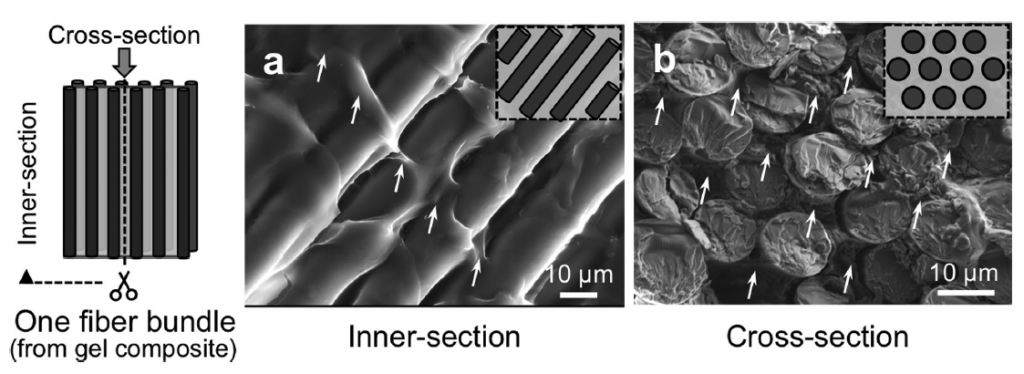Hydrogels have shown significant potential in everything from wound dressings to soft robots, but their applications have been limited from their lack of toughness – until now. A team of scientists at Hokkaido University have developed a new set of hydrogel composites or "fiber-reinforced soft composites" that combine hydrogels with woven fiber fabric to create a material that is five times stronger than carbon steel.
Composite materials have been around for millennia and the principle is very simple. A very soft substance like mud can be made strong enough to make bricks by adding straw as a tempering material. The same applies to adding crushed pottery to brick, seashells fragments to ceramic, or glass fiber to plastic.
The latter is very similar to the fiber-reinforced hydrogel. Hydrogels are made of hydrophilic polymer chains that absorb up to 90 percent water. They aren't very strong or durable, but by adding glass tiny fibers the researchers created a tough, bendable, stretchable material.

According to the team, the composite hydrogel is remarkably strong, probably due to dynamic ionic bonds between the fiber and hydrogels, and within the hydrogels. In tests using polyampholyte gels and a single glass fiber measuring 10μm in diameter, the material turned out to be 25 times tougher than glass fiber fabric, 100 times tougher than hydrogels, and five times as strong as carbon steel, based on the amount of energy needed to destroy them.
"The fiber-reinforced hydrogels, with a 40 percent water level, are environmentally friendly," says Dr Jian Ping Gong, "The material has multiple potential applications because of its reliability, durability and flexibility. For example, in addition to fashion and manufacturing uses, it could be used as artificial ligaments and tendons, which are subject to strong load-bearing tensions."
The research was published in Advanced Functional Materials.
Source: Hokkaido University






